Every culture has its own rhythm when it comes to food—and I don’t just mean what’s on the plate, but how you eat it, who eats first, and what behaviors are considered polite. Some customs are practical, others deeply symbolic, and many are simply delicious in action.
I’ve spent years tasting, asking, learning—and unlearning—my assumptions around the table. Let’s travel the world without leaving our seat, one bite (and habit) at a time.
1. Eating With Hands In India
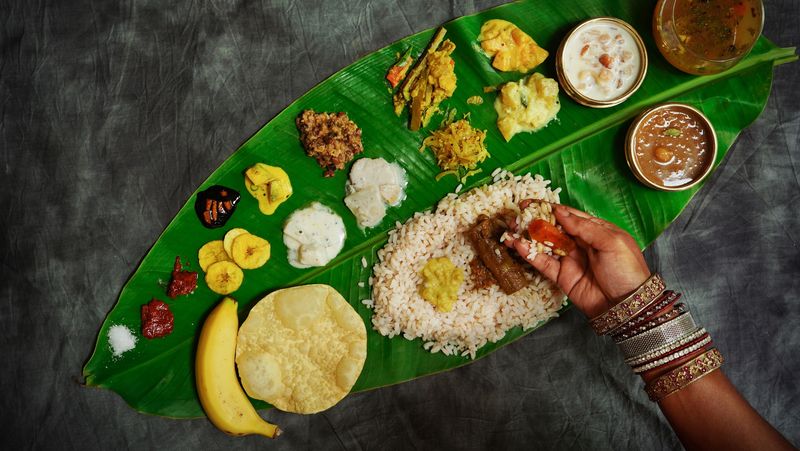
Fingertips become your best utensils across many Indian households. Scooping up spiced curries with warm roti or mashing rice into dal becomes a sensory part of the meal.
I was awkward the first time, but there’s something deeply grounding about connecting to food this way. Just remember: always use the right hand.
2. Sharing From One Big Plate In Ethiopia
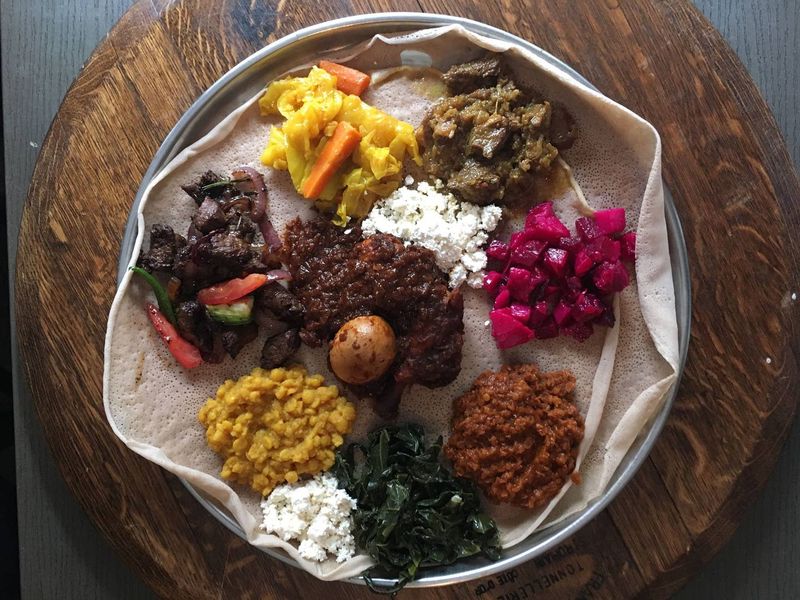
Meals often come served on injera, a giant sour flatbread that doubles as plate and utensil. Everyone tears off pieces to gather up piles of spiced lentils, vegetables, and meats—no forks required.
It’s communal eating at its warmest. Feeding someone else at the table is actually considered a loving gesture.
3. Slurping Noodles Loudly In Japan
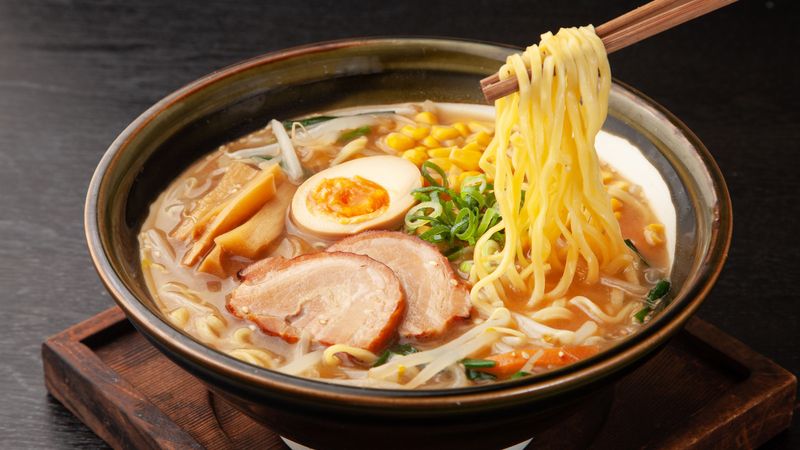
Quiet eating is not the rule here, especially when ramen’s involved. Loud slurps show appreciation, cool down the noodles, and even enhance the flavor.
The first time I let myself slurp freely, I felt oddly liberated. Just don’t try this in a fancy Western restaurant.
4. Using Bread As A Spoon In The Middle East
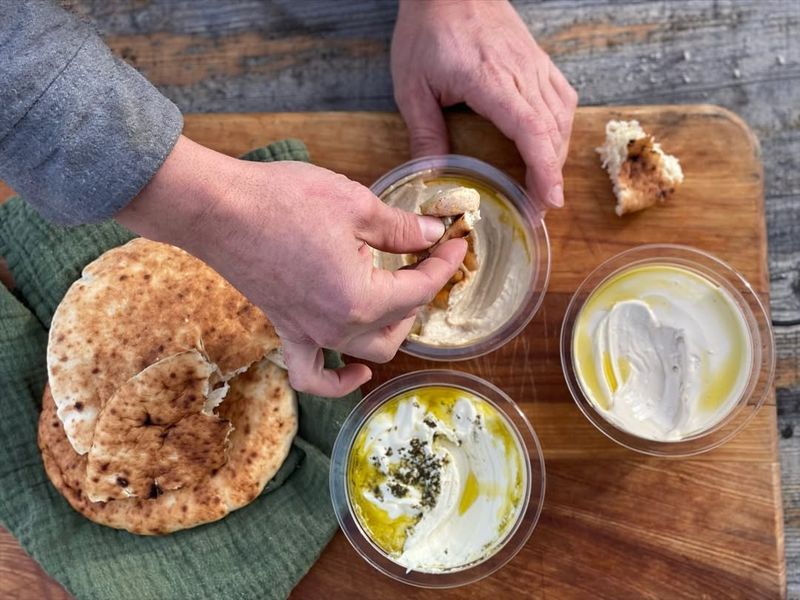
Tearing soft pieces of pita to scoop up creamy hummus or smoky baba ganoush feels so natural, you’ll wonder why you ever needed cutlery. It’s both efficient and intimate.
I learned quickly that tearing, not biting, is considered polite. The bread becomes an extension of your hand.
5. Sitting On The Floor To Dine In Thailand
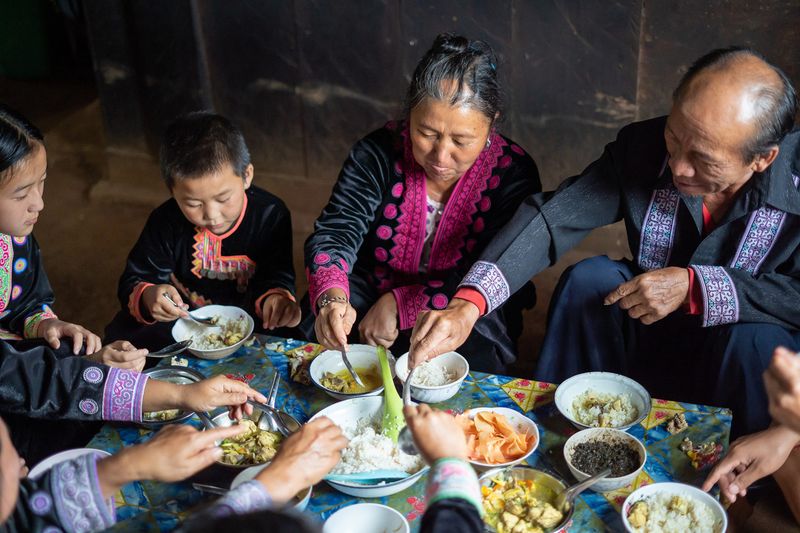
In rural Thai villages and traditional settings, meals often happen at ground level. With mats laid out and dishes placed in the center, it’s a relaxed, familial affair.
You sit cross-legged or to the side, and the vibe is wonderfully casual. It makes slow eating feel effortless.
6. Eating In Complete Silence In Finland

Conversation during meals tends to be minimal in Finnish culture, especially among families. Silence isn’t awkward—it’s respectful and mindful.
I once had a home-cooked salmon soup in Helsinki where nobody said a word. The stillness somehow made the dill broth taste deeper.
7. Using Chopsticks For Every Meal In China
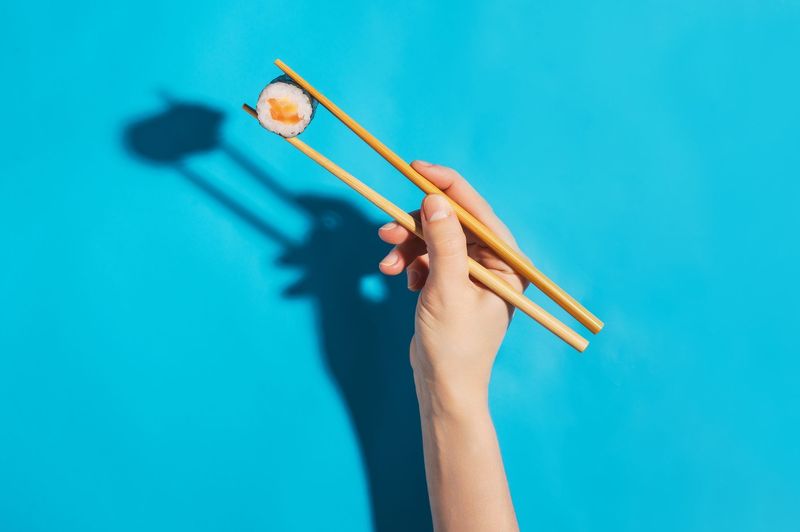
Even rice, slippery tofu, or peanuts get conquered with chopsticks when you grow up using them. Meals become a kind of elegant dance between hand and plate.
I practiced for weeks before mastering the grip. Now I keep a pair in my kitchen drawer at all times.
8. Pausing To Say Grace Before Eating In The U.S. South
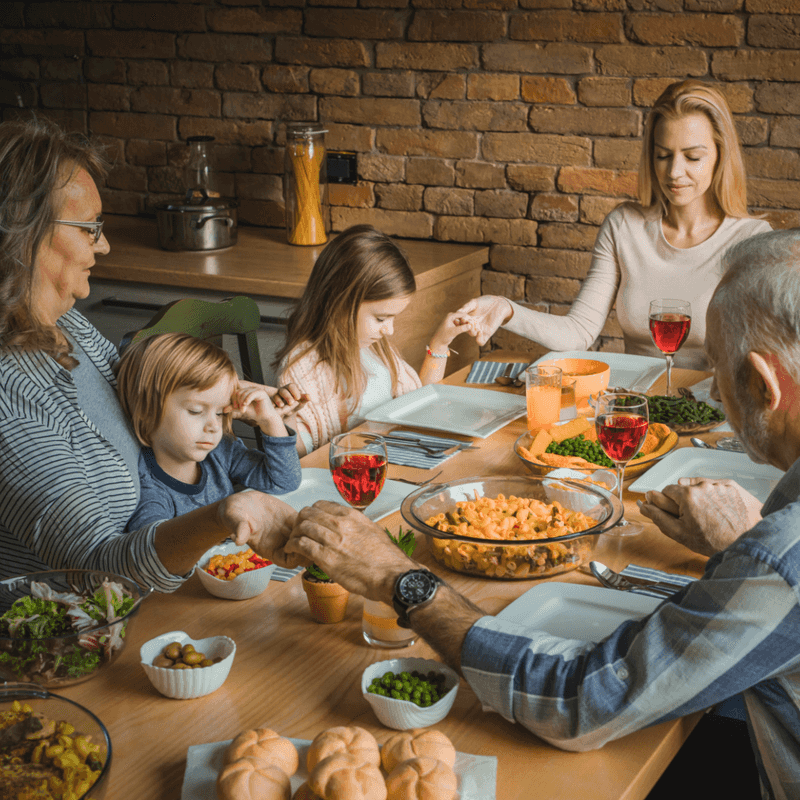
Dinner often begins with bowed heads and quiet thanks in many Southern households. It’s not just religious—it’s a pause that frames the meal with gratitude and reflection.
I remember my first Southern Thanksgiving and how even kids respected the hush. The pause made every bite feel earned.
9. Enjoying Long, Multi-Course Dinners In France
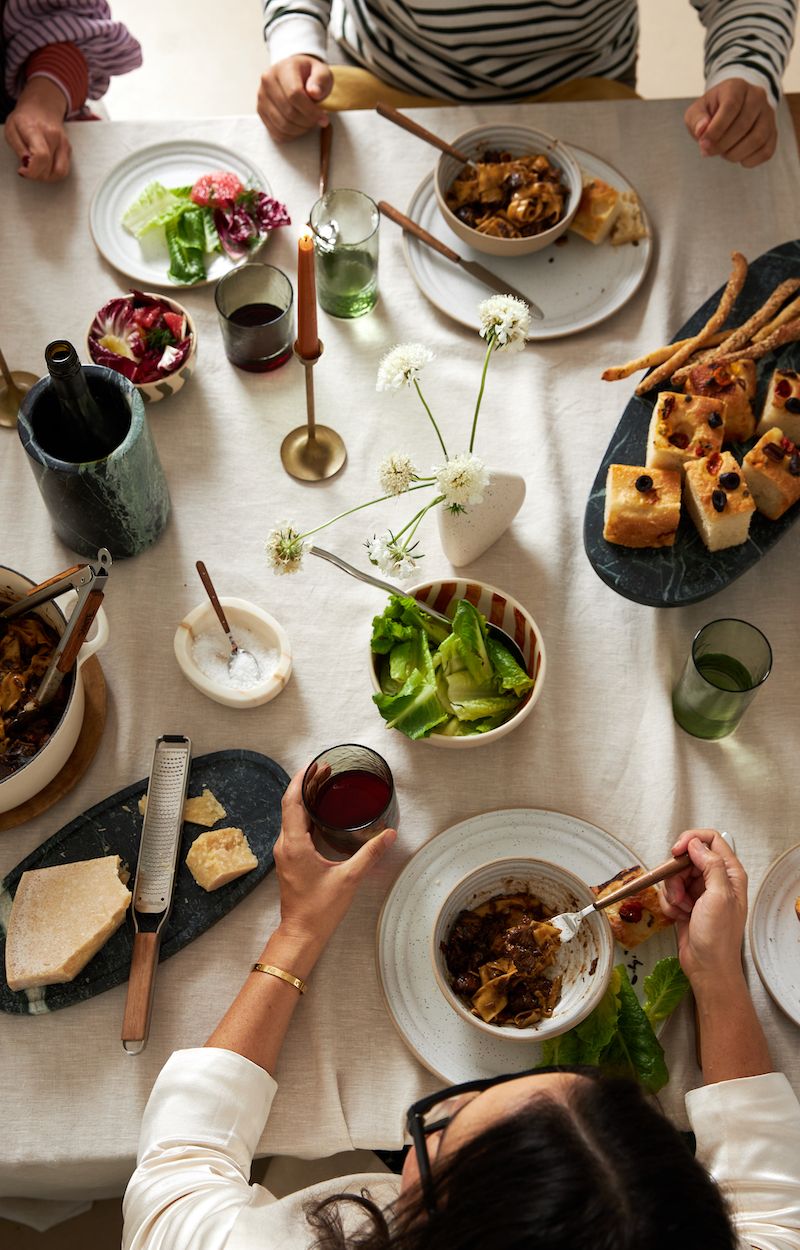
There’s no rushing a French dinner—it unfolds slowly, from aperitif to cheese plate. Conversation lingers, courses arrive with intention, and wine flows like punctuation.
Once, I spent four hours at a Parisian dinner party and didn’t notice the time pass. Every dish tells a story.
10. Drinking Soup Directly From The Bowl In Vietnam

No shame here: lift the bowl and sip away, especially when pho is involved. It’s a casual, aromatic ending to a noodle soup feast.
The balance of salty, sweet, and spice in Vietnamese broths is amazing. There’s something cozy about warming your hands and belly at once.
11. Eating Raw Horse Meat In Japan

Called basashi, this delicacy is thinly sliced, often served with soy sauce, garlic, and wasabi. It tastes surprisingly clean, slightly sweet, and less “gamey” than expected.
I tried it in Kumamoto with mixed feelings but came away impressed by how tender it was. It’s controversial, but deeply rooted in regional tradition.
12. Serving Guests First In Kenya
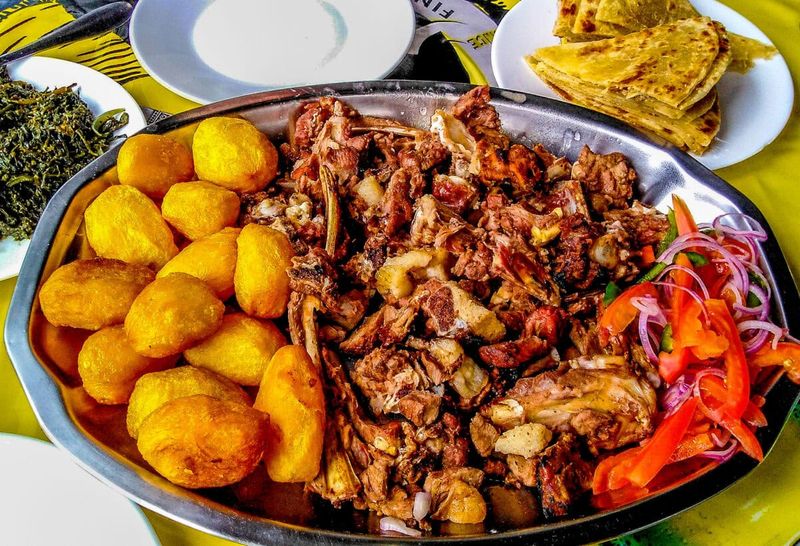
Hospitality is central in Kenyan homes, and guests are always offered the best portions first. It’s not uncommon for a host to eat last or even defer a meal entirely.
When I stayed with a family in Nairobi, I was humbled by their generosity. Food becomes a symbol of care and honor.
13. Eating Dessert First In Sweden (Fika Culture)
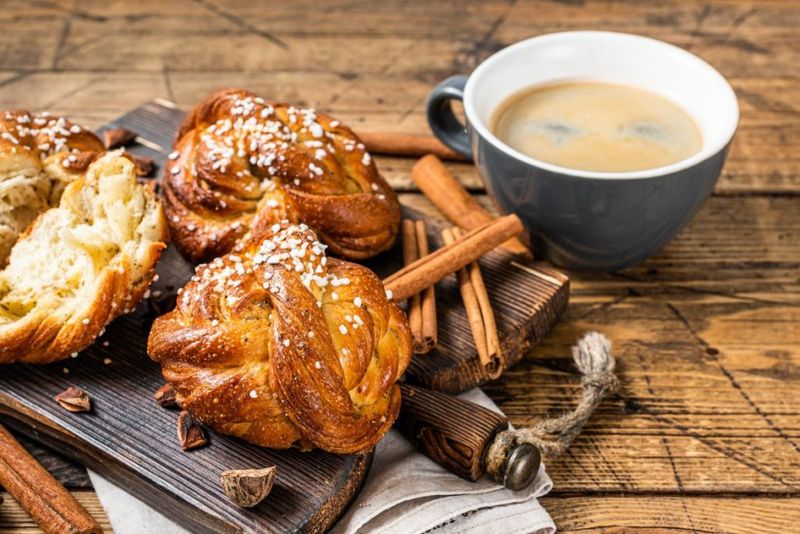
Fika is less about sweets and more about pausing, connecting, and sipping strong coffee with a treat. Sometimes that cinnamon bun comes before the main meal—and nobody bats an eye.
It’s a moment of joy baked into the day. The Swedes have their priorities straight.
14. Only Using The Right Hand In Many Muslim Countries

Cultural and religious practices emphasize eating with the right hand, as the left is considered unclean. Even if utensils are used, the right is still dominant.
I was gently corrected during a dinner in Morocco and appreciated the lesson. It’s a small gesture that shows respect.
15. Leaving A Bit Of Food On The Plate In China As A Sign Of Respect

A clean plate might signal to your host that you weren’t fully satisfied. Leaving a bite or two shows you’re full and thankful. It flips the Western “clean your plate” rule on its head.
Embracing this practice offers a deeper understanding of the cultural nuances that shape social interactions and hospitality in China.

